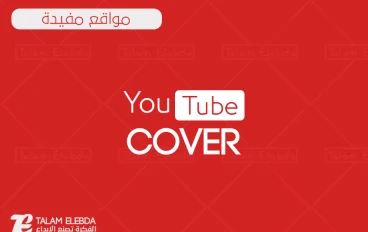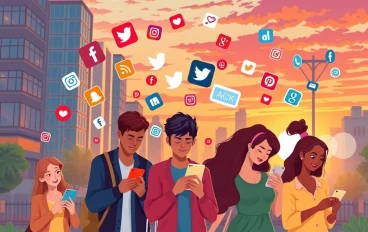
The Good, The Bad, and The Ugly: How Social Media Impacts Our Lives
Introduction
Social media refers to websites and applications that allow users to create and share content or participate in social networking. Some of the most popular social media platforms today include Facebook, Twitter, Instagram, Snapchat, TikTok, and YouTube.
The use of social media has grown exponentially in the past 15 years. In the early 2000s, social media was still relatively new and lacked mainstream adoption. That changed rapidly with the launch of Facebook in 2004 and its opening to the general public in 2006. Facebook helped make social media a daily habit for hundreds of millions of people. Other platforms like Twitter, Instagram, and Snapchat also emerged during this time, accelerating the popularity and network effects of social media.
Today, over 70% of Americans use some type of social media. There are an estimated 4.2 billion social media users worldwide. People now spend on average over 2 hours per day on social media. Clearly, these platforms have become deeply embedded into modern digital life.
This content will provide an overview of major social media platforms, benefits and risks of social media use, social media marketing for businesses, emerging social media trends, social media and politics, social media addiction, tips for healthy social media habits, and the potential future of social media technology. The goal is to comprehensively cover various aspects of the social media landscape today.
Major Social Media Platforms
Social media has become an integral part of everyday life for people around the world. There are numerous social media platforms that allow users to connect, share content, and communicate in different ways. Some of the most popular and widely-used platforms include:
Founded in 2004, Facebook is the largest social media platform worldwide with over 2.8 billion monthly active users as of Q4 2020. Initially launched as a network for college students, Facebook expanded rapidly and allowed anyone to create an account and connect with friends and family. The platform is popular across all age groups but sees the most usage from individuals aged 25-34. Users can share photos and videos, post status updates, join groups, and more.
Launched in 2010 as a mobile photo sharing app, Instagram is used by over 1 billion people every month. It has become a popular platform for sharing visual content and is most popular with young adults under 30. Instagram allows users to edit and filter photos and videos and share them across the app. It also supports short video clips known as Reels. Many businesses and influencers use Instagram for brand building and marketing.
Twitter is a microblogging platform that lets users post short, 280-character messages called Tweets. Founded in 2006, it has over 300 million monthly active users who use it to share news, opinions, and status updates. Twitter is popular with celebrities, politicians, journalists, and news organizations due to its real-time nature. The platform is most used by adults under 50 years old.
TikTok
TikTok is a video sharing app with over 1 billion monthly active users as of 2021. It allows users to create, edit, and share short videos that are typically 15 to 60 seconds long. TikTok features an algorithmically curated For You feed that recommends content based on users' interests and engagement. It is extremely popular with teenagers and young adults with 41% of its users between 16 and 24 years old. The app has given rise to viral dance and comedy trends.
YouTube
Owned by Google, YouTube is the largest video sharing and streaming platform. Founded in 2005, it has over 2 billion monthly logged-in users who watch over a billion hours of videos daily. Anyone can create a channel on YouTube and upload videos which can then be liked, shared, and commented on. YouTube offers a wide range of user-generated and professional videos including vlogs, music videos, short films, live streams, and more. It is popular across all age groups but sees high usage among teens and young adults.
With over 50 million daily active users, Reddit is a network of communities centered around specific topics and areas of interest. Users can submit posts containing text, links, images, and videos which other users can then upvote or downvote. The most popular content rises to the top. Subreddits feature niche topics that users can anonymously discuss and engage with. Reddit appeals mainly to young adult males interested in tech, gaming, sports, and entertainment content.
Benefits of Social Media
Social media platforms provide numerous benefits that have transformed how people communicate and share information. Here are some of the key benefits of social media:
Connecting People
One of the biggest benefits of social media is its ability to connect people across geographical boundaries and time zones. Platforms like Facebook allow users to stay in touch with friends and family, no matter where they are in the world. Social media facilitates conversations and sharing of content between people who would otherwise not be able to communicate.
Sharing Information
Social media makes it extremely easy to share information with large groups of people. News, events, ideas, and more can be instantly disseminated via social platforms. This facilitates the democratization and decentralization of information. Social media allows people to bypass traditional media channels to directly convey messages and content.
Entertainment
Billions of people use social media daily for entertainment purposes. Platforms like YouTube, TikTok, Instagram, and Twitch provide endless entertainment options. Social media is an extremely popular outlet for entertainment media like viral videos, memes, vlogs, and livestreaming. This brings joy and amusement to countless users.
Activism
Social media is a powerful tool for activism and effecting social change. Activist movements and campaigns can reach and engage supporters through social platforms. Hashtags and viral content help raise awareness of causes and issues. Social media facilitates grassroots organization and mobilization around shared ideals and goals.
Marketing for Businesses
Social media provides a crucial platform for businesses and brands to market their products and services. Companies can interact directly with customers and build brand awareness through social channels. Targeted ads, influencer marketing, and business pages/profiles allow businesses to attract new customers. Social media is a low-cost marketing avenue that levels the playing field for small businesses.
Risks of Social Media
Social media platforms come with their own set of pitfalls and dangers that users should be aware of. Some of the major risks associated with social media include:
Cyberbullying
Social media has provided a new avenue for bullying to occur. Cyberbullying involves using digital communications to intentionally embarrass, harass, intimidate or mistreat someone. This can include posting hurtful messages, threats, rumors, embarrassing photos or videos, and other content intended to harm the victim. The anonymity provided online and massive audience accessible makes cyberbullying particularly dangerous.
Spread of Misinformation
Social networks allow misinformation, conspiracy theories, and false news to spread rapidly. Without editorial oversight, inaccurate content can reach millions of users through shares and likes. This can negatively impact public discourse and knowledge.
Privacy Concerns
Social media collects an enormous amount of personal data that can be exploited or sold to third parties. Users give up a certain degree of privacy and control when joining these platforms. Private information may be leaked, hacked, or misused without a user's consent.
Mental Health Impact
Studies have found links between high social media usage and increased rates of anxiety, depression, loneliness, self-harm, and suicidal thoughts in teenagers. Social media can promote negative social comparison and distort reality, leading to self-esteem issues. The fear of missing out (FOMO) is also associated with compulsive social media checking.
Addictive Qualities
Social media platforms use design techniques to maximize time spent and engagement. The constant stream of new content and notifications can promote addictive checking habits. Social media addiction is a rising phenomenon that can decrease productivity and detract from real life relationships.
Social Media and Businesses
Social media platforms have become an indispensable part of marketing and brand building for businesses of all sizes. Platforms like Facebook, Instagram and Twitter offer unparalleled opportunities for companies to engage with current and potential customers.
Marketing - Businesses can promote products, run targeted ads, share content and offers, and boost brand awareness through social media. Platforms provide detailed analytics on ad performance and engagement.
Customer Engagement - Social media allows brands to interact with their audience in real-time. Companies can gather feedback, run polls and surveys, provide customer service, and build relationships.
Influencer Marketing - Partnering with social media influencers allows brands to tap into their follower base. Influencer endorsements and content partnerships expand reach and credibility.
Building Brand Awareness - Businesses can develop their brand identity and personality through social media content and engagement. Platforms allow showcasing products, behind-the-scenes content, and upholding brand image.
With billions of active users worldwide, social media presents invaluable opportunities for businesses to connect with consumers. Companies that strategically leverage these platforms can boost marketing, improve customer relationships, and strengthen their brand.
Social Media Trends
Social media is continuously evolving with new trends emerging regularly. Some of the biggest social media trends over the past few years include:
Rise of Influencers
Influencers have become a major force on social media. An influencer is someone who has built a large following and can influence their audience’s purchasing decisions. Brands are increasingly partnering with influencers to promote their products and services. Micro-influencers, who have smaller but more targeted followings, have also risen in popularity.
Live Video
Live streaming video on platforms like Facebook, Instagram, Twitch, and YouTube has exploded. Users are increasingly drawn to the immediacy, rawness and excitement of live video. Brands utilize live videos to engage directly with audiences in real-time.
Ephemeral Content
Ephemeral content that disappears after a set timeframe has become massively popular thanks to apps like Snapchat and Instagram Stories. This type of temporary content creates a greater sense of urgency and immediacy. Brands leverage ephemeral content to make followers check their apps more frequently.
Social Commerce
Social platforms are being used more and more for shopping. Features like shoppable posts help convert social media users into paying customers. As social commerce grows, platforms are adding additional ecommerce functionalities.
Targeting Niche Communities
Highly-targeted content aimed at specific niche communities and special interests is on the rise. Platforms like Reddit, Twitch and Discord have created thriving communities for users to bond over shared interests. Brands can effectively target specialized audiences on niche platforms.
Social Media and Politics
Social media has had a profound impact on politics and political discourse. Platforms like Facebook and Twitter have changed how politicians campaign and interact with constituents. Additionally, social media has affected how news and political information spreads.
One major effect social media has had on politics is enabling the spread of fake news and misinformation. The viral nature of social media means that false or misleading stories can spread extremely rapidly on platforms like Facebook. There have been multiple instances of viral fake news stories circulating on social media that were later debunked. However, the damage was already done as the falsities had reached millions of users. This highlights the need for more fact-checking and moderation on social media.
Political campaigns are also now using social media for advertising, fundraising, organizing supporters, and spreading their messages. Social platforms allow campaigns to directly interact with voters and bypass traditional media. Candidates can quickly respond to events and drive narratives in their favor using social networks. The use of targeted ads on platforms like Facebook has raised ethical questions around privacy and electoral influence. Regulations around political advertising on social media remain a hotly debated issue.
Some argue social media has had a negative effect on political discourse. The ability to share instant reactions means online discussion around politics and issues can become extremely polarized. The anonymity afforded on platforms like Twitter enables the spread of uncivil, extreme rhetoric that can crowd out reasonable debate. However, others contend social media allows more diverse voices to engage in political talk and activism. There are still open questions around social media's ultimate influence on the quality of civic discourse.
Overall, social media has fundamentally changed how citizens receive news and information around politics. For better or worse, social platforms are now a dominant force in political campaigns, policy debates, and staying informed. As their role in politics continues to evolve, social networks bring both opportunities and risks for a healthy democracy.
Social Media Addiction
Social media can lead to compulsive use and addiction in some individuals. This is driven by features and algorithms that create a feedback loop of dopamine in our brains. Dopamine is a neurotransmitter involved with the reward, pleasure, and addiction systems in the brain.
When someone receives likes, comments, follows, etc. on social media, it triggers a release of dopamine that makes them feel good. This reinforces the behavior of checking and using social media frequently. Over time, the brain can become reliant on social media for that dopamine hit.
Social media also fosters a fear of missing out (FOMO). Users worry they'll miss something important if they don't constantly check for updates and notifications. This compounds the compulsive use of platforms.
Another issue is comparison to the curated lives of others online. Social media allows people to present carefully selected and edited highlights of their life. Comparing oneself to these curated feeds can lead to negative self-perception.
Some signs of social media addiction include using platforms for much longer than intended, obsessive thoughts about likes/comments, anxiety when unable to access accounts, inability to control use, and prioritizing social media over real world relationships and responsibilities.
To use social media in a healthier way, it's important to be mindful of usage, take regular breaks, turn off notifications, observe how different platforms make you feel, and focus more on real world connections. Moderation and balance is key.
Tips for Healthy Social Media Use
Social media platforms can provide many benefits, but unhealthy social media habits can negatively impact mental health, productivity, and relationships. Here are some tips for developing a healthier relationship with social media:
Set time limits - Limit the time spent each day scrolling and posting. Set a timer or use one of the many apps that can track usage and remind you when you've reached your limit. Start with 30-60 minutes per day.
Disable notifications - Getting constant notifications pulls your attention back to the phone and fuels compulsive checking. Disable notifications so you choose when to check in, rather than being interrupted.
Assess if accounts/content bring value - Regularly review who you follow and why. Unfollow or mute accounts that trigger FOMO, negative emotions, unhealthy comparisons, or are otherwise not enriching.
Take breaks - Schedule specific times to be completely off of social media, such as during meals, work hours, evenings, or weekends. Consider a digital detox vacation. Unplugging helps gain perspective.
Focus on IRL connections - Make spending quality time with loved ones a priority over social media. Have shared experiences and meaningful conversations.
Find balance - Social media can have benefits in moderation, but shouldn't dominate your time and attention. Strive for balance between online connection and real world living.
Developing healthier social media habits requires self-reflection and discipline, but reducing compulsive use can greatly benefit mental health. Focus social media time on whatever provides the most value for you.
The Future of Social Media
Social media is still a relatively new phenomenon, and as such, its future is unknown and full of possibilities. Here are some trends and predictions for where social media may be headed in the coming years:
More Regulation
As social media becomes more ubiquitous and influential, there will likely be more regulation imposed by governments. This may include regulations around content moderation, privacy protections, transparency around algorithms, and combatting disinformation campaigns. We may see attempts to regulate addictive features that contribute to overuse. There will likely be vigorous debate around these regulations and their impact on free speech.
Integration with Augmented and Virtual Reality
As augmented reality (AR) and virtual reality (VR) technologies advance, they will likely become integrated with social media, creating immersive shared experiences. Social VR spaces like Meta's Horizon Worlds where users interact as avatars could become more common. AR filters and lenses which overlay digital images onto the real world are already popular on platforms like Snapchat and Instagram. These technologies could enable more creativity and connection in digital interactions.
Continued Growth in the Developing World
Many developing countries are only now beginning to experience widespread internet access via smartphones. Facebook, for example, continues to grow largely driven by increases in users in India, Indonesia, and Africa. Social media adoption in these emerging markets will bring in many new diverse voices. This has implications for social movements, cultural mixing, and how users in the developing world experience and shape the nature of social media platforms.
While the specifics are impossible to predict, we can expect social media to continue evolving in the coming decades as new technologies emerge and new generations of users reshape their role and meaning in society. The platforms may change, but our human need for connection and community will endure.































